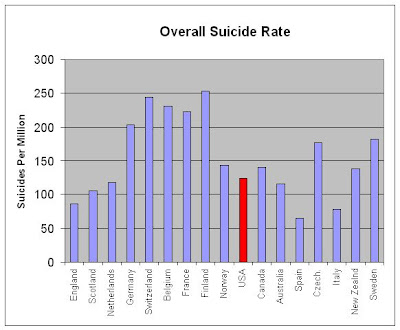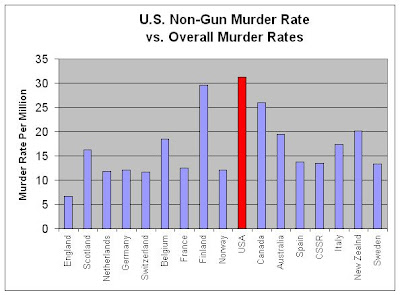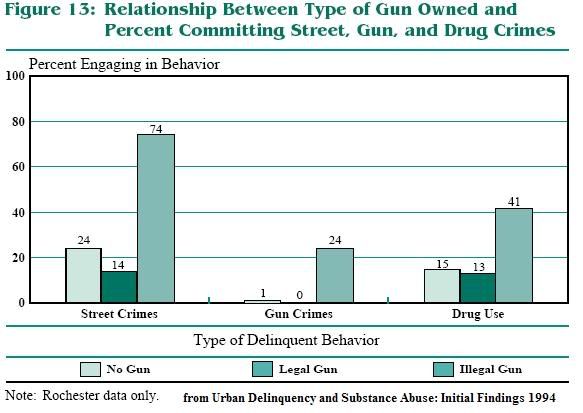Quote:
The non-firearm homicide rate has been pretty steady for decades, with rates for knives, blunt objects, etc., being pretty steady. The large variation in the homicide rates has been due to firearms, in the last few decades due to handguns.
If a group of people are violent to begin with, what do you think will happen when if you give them ready access to firearms ? The answer is obvious and it is what we see in the US.

Has the supply of knives, blunt objects and guns gone down? NO. The amount of guns has gone UP. This breaks any link as there should be a nice correlation between gun supply and murder. There is none.

Quote:
Gun homicides by persons 18-24 years old declined after the peak in 1993 but have not returned to the levels seen prior to the mid 1980's.
The trend in nongun homicides shows little change, declining or fluctuating slightly for all age groups.
Gun homicides by adults 25 and older declined through 1999, but have increased since then.
The sharp increase in homicides from the mid-1980's through the early 1990's and much of the subsequent decline is attributable to gun violence by juveniles and young adults.
SO most of the people using guns to commit murder are juveniles that are already ineligible to own guns!
http://www.ojp.usdoj.gov/bjs/homicide/weapons.htm
If availability = death, why doesn't the suicide rate correlate in the same way?

It doesn't. Another broken link.
And if guns are the problem, our high availability should lower the non-gun homicide rate.

Nope, it doesn't. The rate is high in spite of the availability of guns.
http://engram-backtalk.blogspot.com/2007/04/guns-and-murder-in-america.html
It's a culture problem.
The non-firearm homicide rate has been pretty steady for decades, with rates for knives, blunt objects, etc., being pretty steady. The large variation in the homicide rates has been due to firearms, in the last few decades due to handguns.
If a group of people are violent to begin with, what do you think will happen when if you give them ready access to firearms ? The answer is obvious and it is what we see in the US.

Has the supply of knives, blunt objects and guns gone down? NO. The amount of guns has gone UP. This breaks any link as there should be a nice correlation between gun supply and murder. There is none.

Quote:
Gun homicides by persons 18-24 years old declined after the peak in 1993 but have not returned to the levels seen prior to the mid 1980's.
The trend in nongun homicides shows little change, declining or fluctuating slightly for all age groups.
Gun homicides by adults 25 and older declined through 1999, but have increased since then.
The sharp increase in homicides from the mid-1980's through the early 1990's and much of the subsequent decline is attributable to gun violence by juveniles and young adults.
SO most of the people using guns to commit murder are juveniles that are already ineligible to own guns!
http://www.ojp.usdoj.gov/bjs/homicide/weapons.htm
If availability = death, why doesn't the suicide rate correlate in the same way?

It doesn't. Another broken link.
And if guns are the problem, our high availability should lower the non-gun homicide rate.

Nope, it doesn't. The rate is high in spite of the availability of guns.
http://engram-backtalk.blogspot.com/2007/04/guns-and-murder-in-america.html
It's a culture problem.







